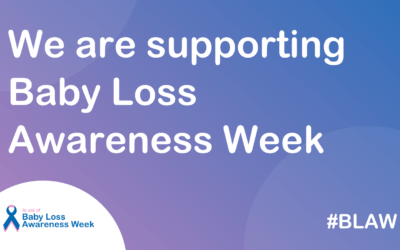On the 12th March 2024 the Department of Health and Social Care, NHS England and the UK Health Security Agency (UKHSA) published the National Flu Immunisation Programme 2024 to 2025 letter.
We’re only just out of the winter months so is it time to think about the next flu season already? Absolutely….we can start to plan ahead and consider the proposed changes to the timing of the service and the recommendations for the advice regarding using specific vaccines to help with planning and procurement in our pharmacies.
So what are the key points of the 2024-25 flu immunisation programme?

Eligibility criteria
The eligibility criteria for the NHS flu programme this year currently remains unchanged, prioritising individuals aged 65 and over, children, pregnant women, those in clinical risk groups, carers, close contacts of those who are immunosuppressed and certain frontline social care workers.
Timing of vaccination
A notable adjustment in timing is observed. For most adults, vaccinations are set to commence in October 2024. This shift aims to address potential waning immunity over time, with the goal of completing vaccinations by November, aligning closely with the peak flu season (December-January).
However, children (including those in at-risk groups) and pregnant women will start receiving vaccinations from the 1st September 2024 due to the significant public health benefits of vaccinating younger children, their comparatively slower immunity waning rate, and the critical need to not only provide protection to pregnant women and their babies during pregnancy but to provide maternal antibody protection post birth to the baby in the first few months of their life too.
All frontline healthcare workers, encompassing both clinical and non-clinical staff who interact with patients, should be provided with the flu vaccine starting from October (exact commencement date to be confirmed) under employer led occupational health schemes.
Exceptions may be made for earlier vaccinations in certain exceptional circumstances, such as for individuals planning to commence immunosuppressive treatment for example in accordance with guidance in the Green Book.
Recommended vaccines
Recommended vaccines remain unchanged from last year, with an emphasis on prioritising specific vaccines as outlined in the National Flu Immunisation Programme 2024 to 2025 letter.
However data from 2022-2023 season, indicates the potential added advantage for using QIVr in those 65 years and over so this year the Joint Committee on Vaccination and Immunisation (JCVI) has advised to prioritise the administration of QIVr for those aged 65 years and above.
Co-administration with other vaccines
We await further details on how the flu programme will fit in with any autumn Covid-19 vaccination programme. However it is recommended for providers to align delivery of the flu vaccine programme with other vaccinations the patient may be eligible (for example shingles, pertussis or pneumococcal vaccines) where appropriate.
Enhancing uptake rates

While the flu vaccination programme maintains its core framework, there’s a concerted effort to enhance uptake rates. Here are some areas of focus:
Reaching 100% Offer Rate
Ensuring that all eligible individuals are offered the flu vaccine is paramount. By maximising the offer rate, we lay the groundwork for broader protection across communities.
Targeting Historically Lower Uptake Groups
Providers have been asked to ensure they make firm plans to equal or improve uptake rates in 2024-2025. Efforts must be intensified to reach historically lower uptake groups, including individuals in clinical risk groups (aged 18-65), children aged 2-3 years, and pregnant women. Tailored outreach strategies and heightened awareness campaigns can play a pivotal role in engaging these demographics.
Addressing Health Inequalities
Central to improving uptake is addressing health inequalities and ensuring equitable access to flu vaccinations. To do so, underserved populations must be prioritised, and barriers to access vaccination needs to be dismantled to ensure that everyone has the opportunity to benefit from flu vaccination later this year.
What can we learn from last years flu programme and uptake rates?
The goal for flu vaccine coverage aims to achieve or surpass a 75% uptake rate among individuals aged 65 years and older, in accordance with the recommendation from the World Health Organization (WHO). However preliminary data from the 2023-24 flu season indicates a decrease in uptake across almost all risk groups in England with the exception of 2 years old and secondary school students where a marginal increase was noted. Although we successfully reached the 75% target for those aged 65 and over, with 77.6% vaccinated, this represented a decline from the previous year’s rate of 79.4%. In contrast, data from 2023-24 revealed that only 41.1% of individuals aged 6 months to 65 in clinical risk groups received their influenza vaccination, down from 48.6% in 2022-23. Similarly, just 31.8% of pregnant women received their flu vaccination, a decrease from the previous year’s rate of 34.7%.
Pause for thought: Identifying Your Hard-to-Reach Groups

Take a moment to contemplate your practice. Which patient groups consistently demonstrate lower flu vaccination rates? Understanding the underlying reasons behind these trends is crucial for devising effective strategies.
National Benchmarks vs. Local Reality
Do your patient populations mirror the national trends (e.g., lower uptake in children, pregnant women)? Analysing this data can reveal specific areas for improvement.
Sharing Your Best Practices
Have you implemented successful initiatives to increase uptake in vulnerable groups? Perhaps it involved targeted educational materials, flexible appointment scheduling, or collaboration with community partners. Sharing your winning strategies with others can benefit colleagues and improve overall vaccination rates.
Learning from Local Success Stories
Have there been successful local campaigns aimed at improving flu vaccination rates in vulnerable populations? Consider reaching out to colleagues who spearheaded these initiatives to gain valuable insights.
A Call for Continuous Improvement
Let’s not stop here! Continuously reflect on your practice’s approach to flu vaccination. Are there new strategies you could implement to reach those most at risk? The flu vaccination programme remains crucial for protecting vulnerable populations and reducing pressure on the healthcare system. By working together, sharing best practices, learning from local successes and focusing on areas for improvement, we can aim to achieve higher uptake rates in the 2024-2025 season and ensure better protection for our most vulnerable patients.
Why not reflect on your practice as part of your Continuing Professional Development (CPD). Click below to fill out a short form which can be emailed to yourself for your own records.
CPD Reflective Practice

Ready to learn more?
Our flu 2024-2025 course is now available over in our Flu Hub. This course will be regularly updated as further guidance gets published and contains all the information you need to need about the vaccinations and service to get prepared for the next season. We also offer virtual and face-to-face flu workshops alongside BLS and anaphylaxis training which is great for those who want to get hands on and practical. Contact us now to save your date for you and your team!





